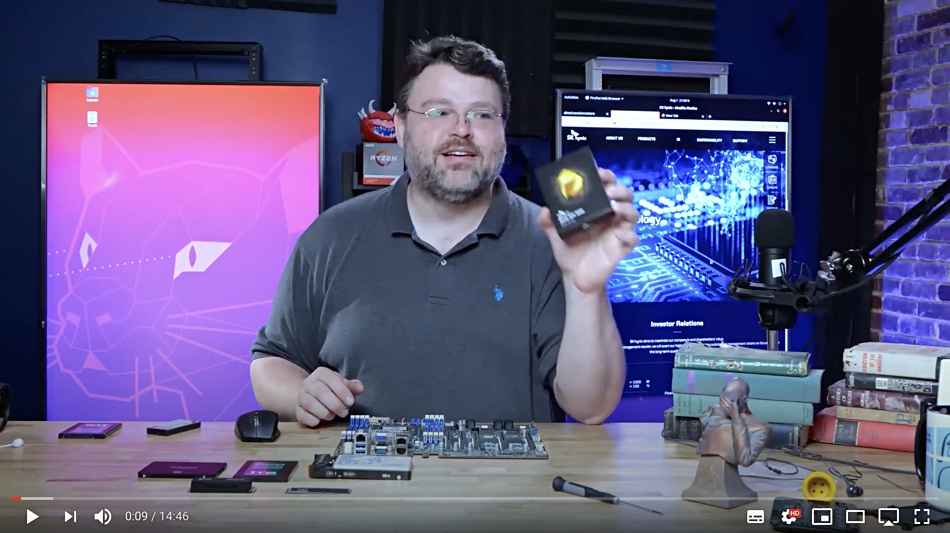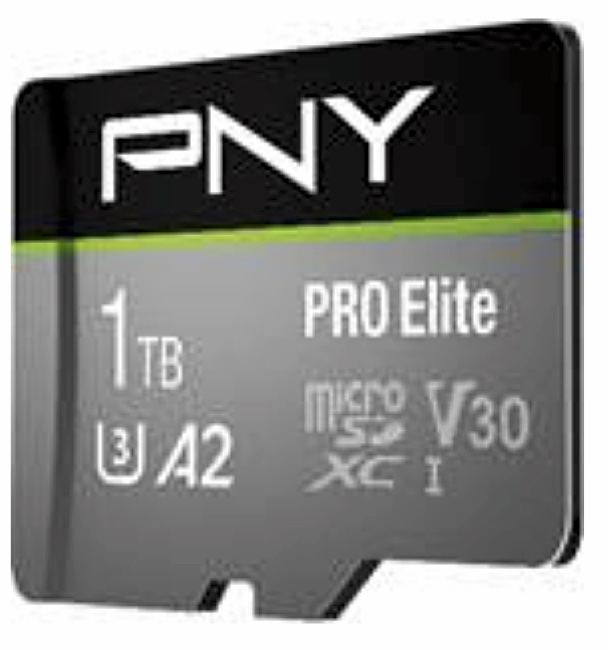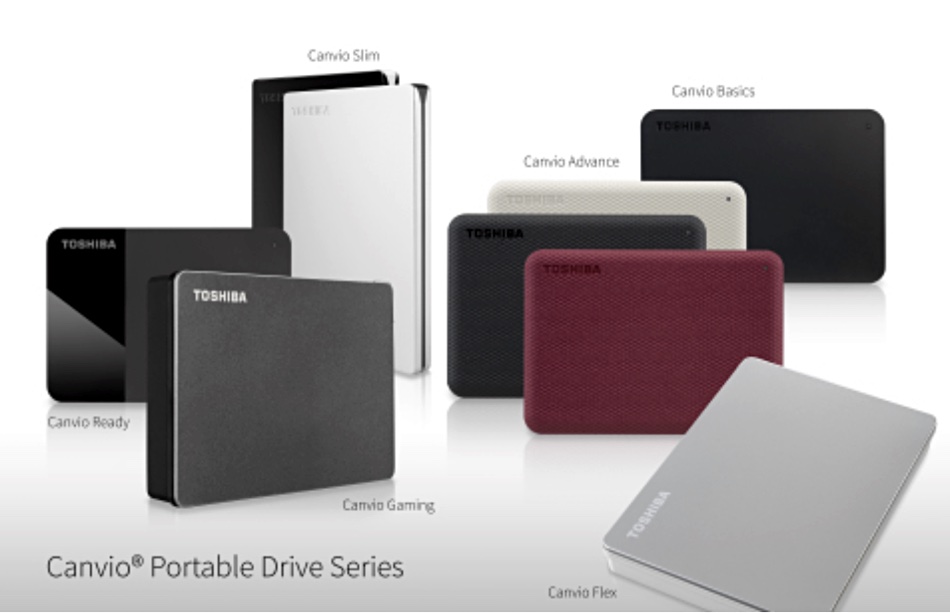Who doesn’t love a benchmark? Lenovo, for starters, when it thinks it is open to manipulation. And who doesn’t love a geek who refuses to play to absurdly restrictive corporate PR rules – we’re looking at you, SK hynix. Scroll down for these stories and much more in this week’s data storage news round up
The SPC-1 benchmark games
Lenovo’s Ted Vojnovich, CTO for external storage, mailed us about the TTA result on the SPC- benchmark. South Korea’s TTA filed it on behalf of Gluesys in November 2019, recording 310,509 IOPS and a record low $KIOPS value of $89.40.
The SPC-1 benchmark tests shared external storage array performance in a test designed to simulate real-world business data access. Its main measurement units are SPC-1 IOPS, transactions consisting of multiple drive IOs, and price performance, expressed as dollars per thousand IOPS ($/KIOPS).
This was an outlier result as the Gluesys system’s capacity was just 4,073GB and the system cost was $26,100 – the third lowest cost out of 37 SPC-1 results we have filed. A couple of Lenovo systems cost less but have a lower price performance rating. They have a high-availability, dual controller architecture.
Vojnovich mailed us to say: “Upstart (TTA) who deems data availability is just RAID across disks (nothing about controller HA or pathing). … they submit a results file of 1 server + 1 RAID adapter + something like [24] drives. [The] results are accepted by SPC-1 guys and set a new price performance leader because cost is so low.”
“This, in turn, makes SPC-1 less relevant to enterprise storage since, for price/performance at least, it will be very hard for enterprise guys to compete. Add to the fact that fewer and fewer pure performance results postings are on [SPC-1] V3, this benchmark is becoming less and less pertinent.
“Bottom line: TTA successfully gamed the benchmark to the point that the benchmark is on its way to no longer be useful for storage.”
TTA’s Hyo-Sil Kim said: “Our result followed the SPC-1 specification right, got an audit and was published. In the specification, there is no regulation about HA or dual controllers. If Lenovo is complaining about the specification, they can join to the SPC meeting and give appeal about it, but they did not do it even though they are a member of SPC. “
SK hynix review tactics backfire
When asked to review SK Hynix’s Gold S31 SATA SSD, Level 1 Tech’s reviewer Wendell Wilson was presented with a list of don’ts by the vendor , such as not comparing it with similar devices from Kingston, Corsair and ADATA.

That did not go well with Wilson, who promptly bought his own Gold S31 SSD.

In the review video he says it’s a completely ordinary SATA SSD intended to be an upgrade drive for PCs with disk drives. It’s a reasonable product and there was no need for SK Hynix’s review shenanigans.
Avatar SFX house goes up the Amazon
New Zealand-based Lord of the Rings and Avatar special effects house Weta Digital is committing fully to AWS to run its visual effects workflow in the cloud.

In a multi-year deal, Weta will migrate the vast majority of its IT infrastructure to AWS with a pipeline that includes 100 proprietary tools and the LED-stage virtual production service.
Weta Digital CEO Prem Akkaraju said in a canned quote: “By adopting AWS’s ultra-scale infrastructure, we can implement a proprietary cloud pipeline and globally scale our production to greater levels than ever before. Weta established a remote collaborative workflow in March due to the pandemic to seamlessly continue work on the Avatar sequels and other films. With the power of AWS, we can now take that success to a global scale. Drawing on AWS’s virtually unlimited compute capacity, we can empower our artists to work safely and securely where they want without technical limitations.”
Weta will use Amazon Elastic Compute Cloud (EC2), with an array of specialised Graphics Processing Unit (GPU) instances for better integration of ML into the VFX creation process, enabling artists to create more life-like, detailed movie creations.
The AWS deal will better enable remote staff to access Weta files from wherever they are located.
This means a whole lot of on-premises Weta storage will move to AWS. Back in 2009 Weta used NetApp arrays to store Avatar movie files.
PNY’s 1TB whopper capacity micro card
PNY has announced the 1TB Pro Elite MicroSDXC card priced at $229.99 on Amazon. The microSD card is rated UHS-I, Class 10, U3 and features V30 video speed allowing for 4K and 8K video recording. Read and write speeds are 100MB/s and 90MB/s.
Android smartphones users can run apps directly from the card, freeing phone storage space for other functions and content.

The card is compatible with a range of host devices: smartphones and tablets with expandable storage capabilities, action cameras, drones, 360-degree and body cameras. A microSD to SD Adapter widens support to digital cameras, DSLRs, MILs and other SDXC enabled devices.
PNY is somewhat late to the 1TB card party but it uses newer flash and has a substantially lower price than competitor
News briefs
Azure Stack HCI is a new Microsoft server OS that delivers hyper-converged infrastructure with hybrid cloud built in. The SW runs apps inside Windows or Linux virtual machines and runs on HCI-capable hardware from Microsoft partners. Microsoft says this the future of Hyper-V virtualization, software-defined storage, and networking.
Cohesity said Siemensis using its technology to protect 300-plus Windows servers in 39 countries, as well as long-term archiving in Switzerland. The servers are in data centres and branch offices. The Cohesity technology can back up data that previously could not be backed up efficiently due to the legacy product and extensive infrastructure systems formerly used by Siemens.
Faction, a multi-cloud data service provider, today announced findings of theFaction 2020 VMware Cloud on AWS Market Survey. The report, based on a survey of 1,054 IT and business professionals, found that enterprise cloud adoption, including interest in VMware Cloud on AWS, is accelerating due to drivers like the COVID-19 pandemic.
In-memory data and analytics supplier GigaSpaces has released InsightEdge v15.5 which enables the creation of a hybrid cluster that can be provisioned both on-premise and in a public cloud, eliminating the need for data replication between clusters. It also has one-click microservices deployment and more no-code one-click connectors are available for on-premises and cloud RDBMS.
Kinetica has given its streaming data warehouse a software update, which uses CPU and NVIDIA GPU data processing for low latency and maximum performance. V7.1 adds external tables for unmanaged data stored in HDFS and blob stores. There is a “cold data” tier for low-cost, high-capacity storage, role-based access control for rows, and data obfuscation for columns.
Toshiba has launched new Canvio Flex and Gaming portable drives and updates the existing Canvio Advance and Ready drives. USB-C connected Flex drives are for Windows/Mac PCS, notebooks and for tablets and store up to 4TB of data. Canvio Gaming drivesstore up to 4TB and have a firmware-customised “Always-On” mode to avoid game hold-ups due to drives sleeping. The Canvio Advance gets a fancy coloured textured case while the Canvio Ready has a two-tone case.









